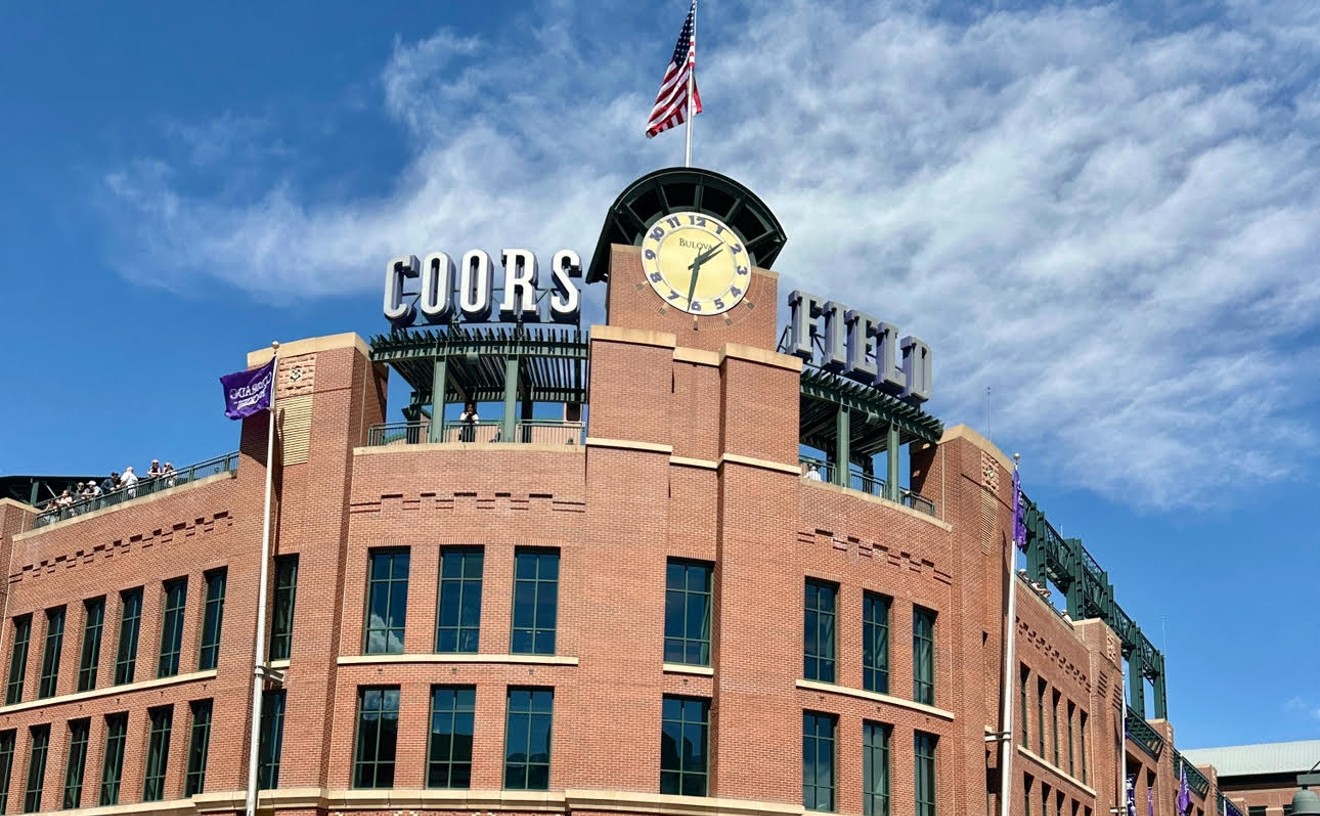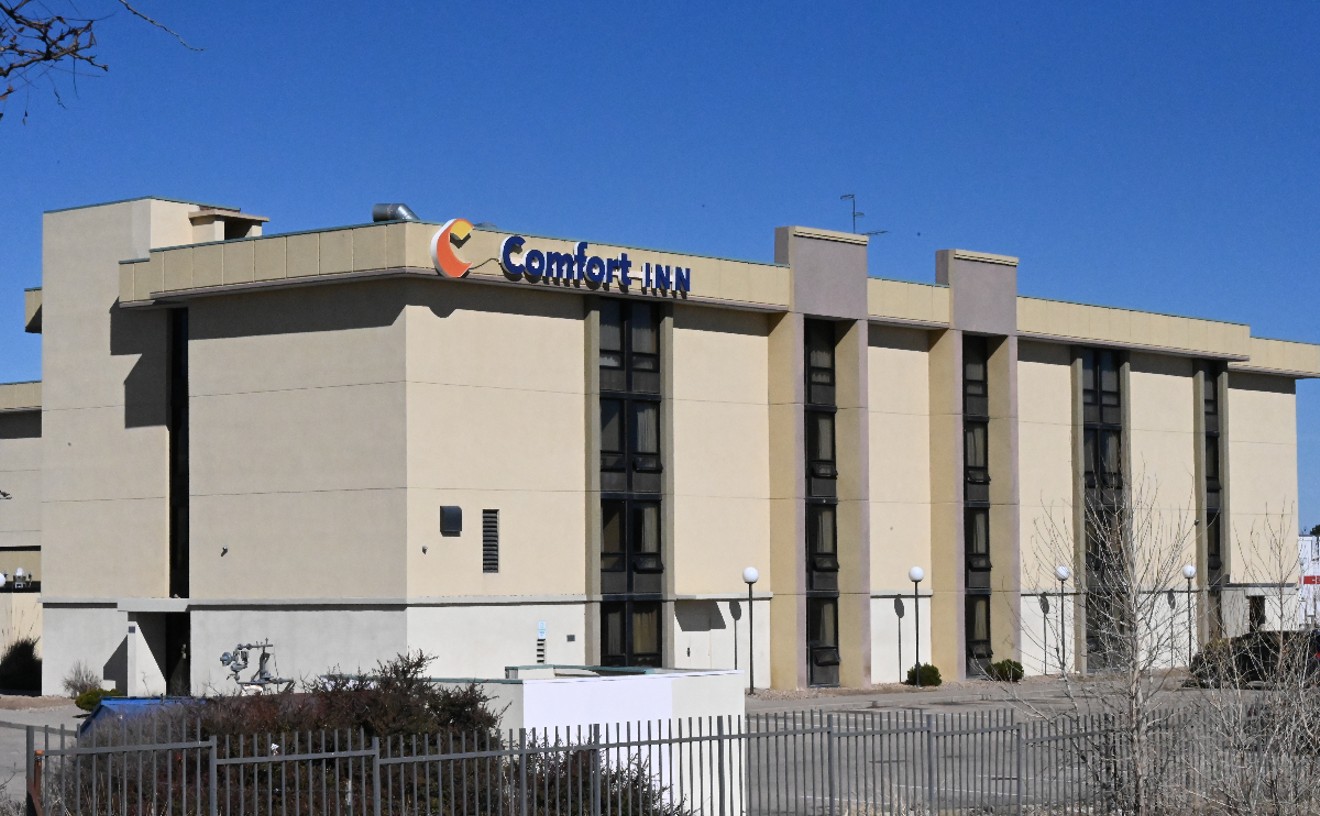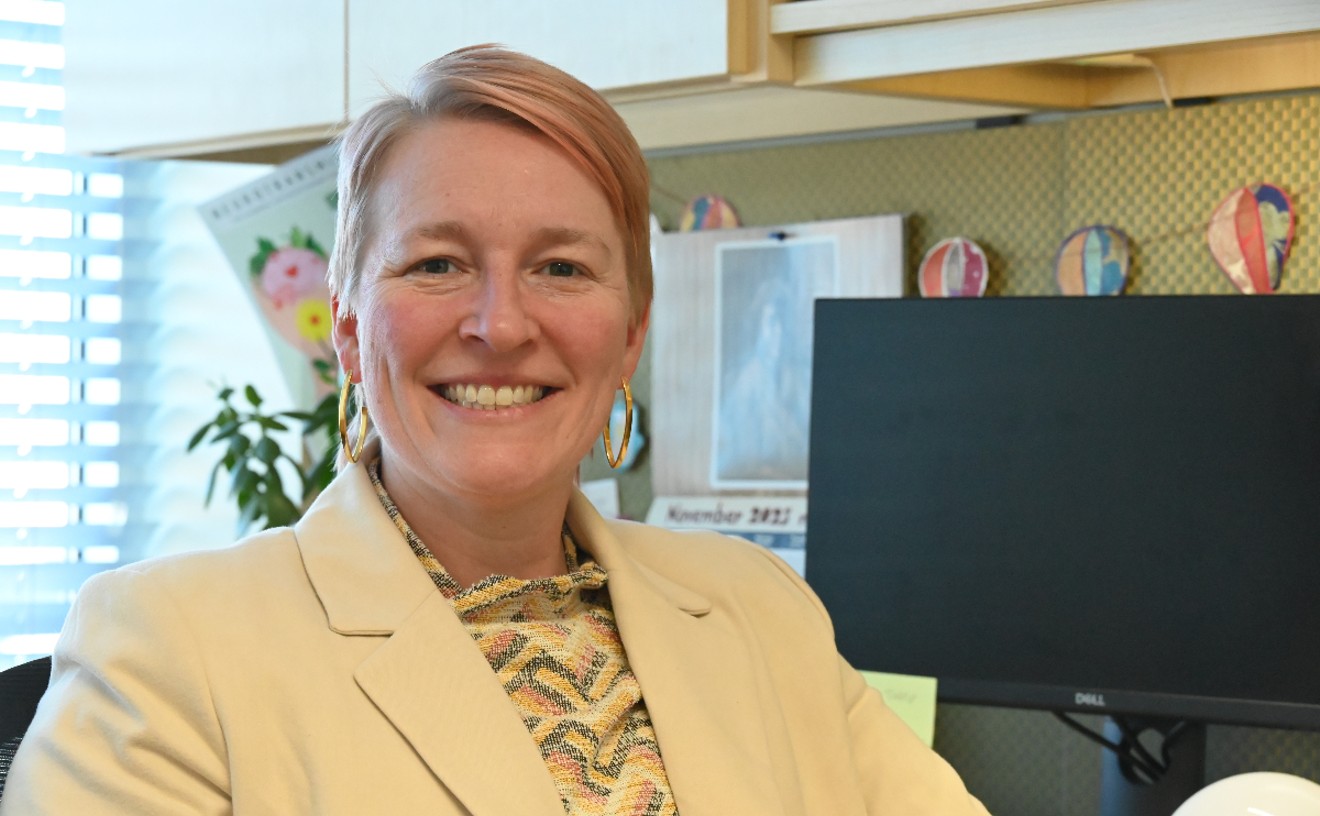Nearly all of them come from families that live below the poverty line, but you wouldn’t know it looking down the clean, spacious hallway of classrooms in a facility that most public high schools would envy. Clayton’s Educare campus was built in 2006 as an addition to the century-old red-brick Historic Clayton Campus, a registered national landmark on the corner of Martin Luther King Jr. and Colorado boulevards. “Often the families, when they come in here for the first time, go, ‘Wow. I never thought anybody valued me and my child to build us a place like this,’” says Charlotte Brantley, Clayton’s outgoing CEO and president.
Clayton might be a nationally known nonprofit, but as Brantley is well aware, it has faced its fair share of scrutiny in the past few years over one of its funding sources.
On July 11, Clayton Early Learning sold the 155-acre plot of land that makes up the now-defunct Park Hill Golf Course to real estate developer Westside Investment Partners for $24 million. The land is still subject to a conservation easement that prohibits development — or, technically, any use other than a golf course.
“At this point, this was really the only way to get [to Clayton’s financial goals],” says Brantley, who stayed on past her planned retirement to close the deal, which she spent much of her tenure at Clayton negotiating. “This wasn’t the only thing we had tried, but when someone came forward willing to buy it for $24 million…it was frankly an offer that, as good stewards of this trust, it wouldn’t have made sense for us to turn down,” she says.
The deal has set off a firestorm, with parks advocates ranging from Park Hill residents to former mayor Wellington Webb claiming that the land should not be developed. They argue that in an increasingly concrete Denver, maintaining green space nearly the size of Washington Park should be an urgent priority.
“There isn’t anything remotely this size in the city that, for generations to come, could be preserved as open space,” says Woody Garnsey, a retired lawyer from Park Hill and one of the most vocal advocates for the land. Garnsey and his wife, Georgia, help spearhead the Save Open Space (SOS) Denver group that plans to fight the powers-that-be. “Our view on that is that once one acre of that land is covered with concrete, it will never be green again. It will never come back,” says Garnsey.
But protecting the land from development isn’t going to be a simple battle, even if plenty of people raise their voices. The decision to either lift the conservation easement or rezone the land will ultimately lie with Denver City Council. On the surface, members face a clear question: Should the land be developed or not? But the terms on which that question will be decided have been shaped by years of stalled negotiations, lawsuits and public distrust.
THE STORY OF A PRESCHOOL AND A GOLF COURSE
Clayton Early Learning has been trying to figure out the right way to get the Park Hill Golf Course off its hands for decades. The golf course, originally a dairy farm, was one of George Clayton’s assets when he died in 1899 and donated most of his estate to the City of Denver for the establishment of a home and school for “white, male orphans” in his name.The city set up a trust commission to execute Clayton’s will and manage his assets; the commission not only opened Clayton College, but it also dealt with all of Clayton’s other properties for most of the next century. In 1930, seeking a way to ensure the stability of the trust’s funds, the commission agreed to turn the tract of land into a golf course.
Both the college and the golf course became embedded in Denver’s racial history. In 1969, the Colorado Supreme Court found that it was illegal for Clayton to restrict its services to white children, and Clayton liberalized its admission to children of any race or gender. At that time, as former Denver City Council president Cathy Reynolds remembers, most golf courses were de facto closed to African-Americans; although there was no formal segregation, they “were simply not welcome to play.” The two exceptions were Park Hill and City Park golf courses, which were open to all residents of the then-majority-black neighborhoods. Former mayoral candidate and state legislator Penfield Tate also remembers Park Hill Golf Course as a popular gathering place for social groups in the African-American community.
The governing structure of the Clayton trust didn’t change until the mid-’70s, after the City began discussing expanding its offices into the downtown U.S. Mint building and sold 35 acres in the northwest corner of the Park Hill Golf Course to the federal government. That both ensured that the Mint would stay in Denver and, as a letter from the city attorney at the time stated, gave the Clayton trust “a very substantial sum of money for property that is not now productive of a large return.”
The City never moved to the Mint. Instead, the federal government auctioned off the land, and it was eventually redeveloped into an apartment complex. And when the Rocky Mountain News reported that the City had sold other parcels of Clayton’s land at below-market value, the City’s attempt to score a win-win sale backfired. In 1981, Colorado Attorney General J.D. MacFarlane petitioned to remove the City as trustee, alleging that it had been deliberately “self-dealing” and misappropriating the trust’s funds for its own benefit, so much so that a report found that the trust could quadruple its earnings under new management. After University of Denver Chancellor Chester Alter took control of the trust for an interim period, the Clayton Foundation was formed and named as the new trustee in 1984.
This new trustee was well aware that it could stand to make a lot more from the golf course than the City ever had — after all, even back then, the golf course was worth more as real estate. So in 1986, the Clayton Foundation listed the property for sale and struck up a $10 million deal with Fulenwider Inc., contingent upon rezoning of the property. But a few years later, the deal was stalled because of a real estate downturn and resistance from neighborhood groups (such as the still-resisting Greater Park Hill Community), which, much as they do today, wanted the land to remain open space.
Reynolds was president of Denver City Council during much of this back-and-forth between Clayton and the City. As she tells it, the City recognized that “the Clayton trust needed money to continue their mission,” but prospects for a sale going through looked grim. So instead, Clayton negotiated a higher annual rental payment from then-golf course manager Belford Wallen. And in a $300 million bond referendum in 1989, city council included a line that gave it $2 million toward the purchase of the Park Hill Golf Course.
That amount wasn’t enough to buy the golf club, remembers Reynolds, so the City couldn’t take immediate action. When Webb came into the mayor’s office, aide Andrew Wallach, an open-space advocate, came up with a different idea: The City could pay Clayton to put a conservation easement on the land that would ensure its continuation as a golf course, and Clayton could continue receiving annual payments. After years of appraisals and legal negotiations, Clayton determined that the amount was fair, and in 1997, Webb’s administration put the conservation easement on the land.
“The idea that we sold to the people is that it was going to remain open space and not be another strip-mall development,” Reynolds says. “But I guess they’re at it again.”
It is somewhat unusual to place a conservation easement on a golf course, and even more unusual that the two parties involved were a nonprofit trust and a municipality. Today, attempts to put conservation easements on golf courses are often denied tax benefits. Still, Webb says, the City believed it had legitimately arranged to preserve the Park Hill Golf Course in perpetuity. “We never dreamed, at that point in time, that attorneys would attempt to remove it,” he says.
Jeff Peshut, a real estate manager who worked with LaSalle Partners to list the property for sale back in the ’80s and then served on Clayton’s board for many years, thinks Clayton should have recognized the conservation easement as equivalent to selling the rights to develop the land. “Anyone who sold an interest in real estate in 1997 could sell it for a lot more in 2019. But who gets that chance?” he says.
Apparently, Clayton does.
NEW DEAL, OLD WOUNDS
According to Ryan Luby, a public information officer at the Denver City Attorney’s Office, lifting the conservation easement would require extensive legal negotiations before city council gets to vote on it. “There’s no way that it can magically disappear,” Luby says. Trepidation about that fact has kept most potential buyers from closing in on a sale (though Brantley says several had expressed interest in the past few years).But then about eight months ago, Brantley says, Westside simply approached Clayton, offering to buy the land for $24 million up front, conservation easement and all.
The proposal left those who have been watching this tract of land for a long time wondering: Why would Westside put up that amount of money if it isn’t sure it can develop the land? “It is very unusual for someone to pay...$24 million for land that technically they cannot redevelop,” Tate explains. “Many people in the community are scratching their heads and thinking [that] if this transaction went forward...is there already a deal that has been discussed where city council will let these people do anything they want to?”
Peshut echoes that line of questioning: “Are they taking a huge risk for a huge return, or did they already have an agreement with the administration and city council to remove the conservation easement?”
Westside managing principal and founder Andy Klein insists that his company has no such agreement with city council, and that it was “certainly a possibility” that the conservation easement would stay in place. “That leaves me with a golf course,” he shrugs.
But that also leaves him with what appears to be a major deficit. A 2015 appraisal valued the golf course at only $3.1 million, whereas its potential as a rezoned development site was over $27.3 million — and its value can only have gone up in the years since.
Klein says that the first step Westside will take is to initiate a community visioning process, which could take a year or more. Based on how open-space advocates are reacting to the deal, he expects the result will include a substantial park, but he doesn’t think preserving the entire chunk of land as a golf course is what the public truly wants. “We currently have about 155 acres of privately owned golf course,” Klein says. “It is not usable by the vast majority of the public who does not golf or pay a fee to use it. I believe we can build something beneficial to the city, including one of the biggest parks in the city.”
Of course, Westside also wants to include uses that would make the land worth the $24 million it paid. Affordable housing, a grocery store and a community center are also on the list of possibilities.
Community members like the Garnseys, meanwhile, are already suspicious of Klein’s appeal to community visioning. “Our belief that we’ll be listened to authentically and honestly is very low,” Georgia Garnsey says. That’s because she and others had major objections to Clayton Early Learning’s previous public comment process, which started in late 2016 with the formation of the Park Hill Golf Course Citizens Advisory Council (PCAC).
On paper, at least, PCAC looks like a thorough process that included a broad representation of voices. Its 28 members comprised five people identified as “community stakeholders” (including Georgia Garnsey); twelve people from various organizations representing nearby neighborhoods; two Clayton Early Learning parents; and representatives from local businesses and nonprofits. City council members Albus Brooks and Christopher Herndon served as ex-officio, non-voting members. PCAC met monthly for a year and a half; public policy and communications consulting company CRL Associates facilitated the committee as it conducted community surveys, reports on the value of the land for various uses, and meetings with stakeholders.
Still, the Garnseys accuse Clayton of conducting a “sham” process. They “just wanted to check a box that they had community involvement,” Woody says. Tate, who attended a few PCAC meetings as an observer, got a similar impression. “It became clear that they had a preconceived idea that they were developing the site,” Tate says of Clayton. “They weren’t really interested in community input; they wanted to get the community to concede the fact that redevelopment was gonna happen. … The deal was already baked and cooked and decided.”
“It was an insult to the people who were participating, because it blew apart any expectation that this was supposed to be an objective process just to find out what the community felt about what that land should be,” Woody adds.

Penfield Tate, who ran for Mayor on curbing development, has spoken out against the sale of the Park Hill Golf Course.
But Brantley also maintains that Clayton is not in a financial bind as a result of the burden of that land (though it did have to close its second Educare campus suddenly for financial reasons before the start of the school year in 2017). According to its 2018 financial report, Clayton had nearly $33 million in assets and $14 million in annual revenue. Lease payments from the golf course represented only about 5 percent of Clayton’s total revenue that same year. But Clayton saw that financial picture as increasingly less viable for the future, and since the land had potential to generate much more as a development site, Clayton began to consider selling it.
“It was about what the future of this land should be at this point in time, to both meet community needs and as trustees of Mr. Clayton’s trust,” Brantley says, adding that the latter obligates Clayton to manage its finances so as to best serve the interests of underprivileged children.
Brantley says the $24 million will generate $1 million annually for the next thirty years if properly invested and spent at the 5 percent rate that Clayton is allowed to take out from the trust every year. Even with that longtime goal, Brantley claims that Clayton’s intentions going into the community visioning process were open-minded: “I used to say, if you could wave a magic wand over that 155 acres, what would you do with it?”
That’s not how the Garnseys saw it. Challenging the assumption that the land should be sold, they felt unheard. When Clayton conducted a survey of community members, the Garnseys objected to what they say were leading questions. (For example, the first question asked respondents how familiar they were with Clayton and whether they knew that it served 20,000 disadvantaged children annually.) In the end, 50 percent of respondents said they supported open space as one of their top three choices for the land.
In 2018, Clayton produced a vision statement called “A Vision for the Future of Park Hill Golf Course Property,” which, according to the Garnseys, it did not share with committee members prior to publication. The statement lays out a mixed-use future for the 155 acres, citing the benefits of parks, but also affordable housing, more grocery stores and recreational opportunities. Ten committee members submitted a written response, arguing that the vision statement glossed over the conservation easement and claiming that Clayton had “ingrained bias” in favor of development during the entire PCAC process.
OLD DEALS, NEW WOUNDS
Open-space advocates and past and present landowners appear to be in a deadlock of divergent goals. Clayton admitted its intent on selling the property from the beginning, and Westside has a stake in developing. Meanwhile, the Garnseys’ contingent opposes any development.Peshut, who resigned from Clayton’s board in 2016, takes a middle path: “I wasn’t opposed per se to the removal of the conservation easement, I just thought it should be done a certain way...to have an open, honest, transparent public-policy discussion with all of the citizens of Denver,” he says. “I don’t begrudge Clayton wanting to generate more revenue, because they do great work. The problem was the way they went about this, by turning it into a backroom sweetheart deal.”
Brantley says that all the public has to do to ease fears about a backroom deal is “look at the complete legality of the sale. … The fact that Westside came to us and made us an offer is pretty clean.”
But an earlier proposed deal between Clayton and the City has residents looking at the Westside deal with suspicion. In 2017 — when the PCAC process had yet to be technically completed — Clayton entered into a complicated agreement with Mayor Michael Hancock’s administration wherein the city would terminate the conservation easement, rezone the golf course, buy half of the land for $10 million and lease the rest for $350,000 per year.

Outgoing Clayton Early Learning CEO and president Charlotte Brantley at Clayton's Educare school.
Sara Fleming
The deal gave Denver the stormwater detention land, plus, as Peshut points out, the opportunity to profit from land sales, since the maximum amount it would pay, $24 million, was still under market value. Part of the problem with that deal, Peshut says, was that the city stood to profit from the golf course while “engaging in the illegal practice of ‘contract zoning.’” In other words, the city had agreed to rezone the property and resell it for more than it had paid.
And the two parties involved appeared to have overlapping interests. For one, Clayton boardmember Andy Meyers was a shareholder in the law firm Brownstein, Hyatt, Farber, Schrek, with which Clayton consulted throughout its consideration of the sale. Another one of Clayton’s lawyers from Brownstein, Bruce James, ran Hancock’s first campaign, and was his personal attorney in the Denver Players prostitution scandal. Garnsey believes that the Brownstein law firm gave Clayton an in with the mayor and the lobbying power to negotiate a sweetheart deal that enabled it to get around the trouble of finding a buyer that would purchase such an encumbered site.
But that proposed deal stalled before it ever went through city council because Arcis also caught on to how valuable the land would be. It sued Clayton, claiming its right to buy the land on the same terms. Then to top the legal fight, Arcis filed an additional lawsuit earlier this year, after the City took over 35 acres for the stormwater detention project, leaving the golf course dysfunctional. Arcis claims it had never approved the project but still had to pay for maintenance while it was under way, and thus deserved compensation. Arcis also alleges that Clayton pressured it into giving up its lease back in 2018, though the company had exercised an option to renew for five years.
In a February 21 letter to Arcis, City Attorney Kristen Bronson wrote that the City was “generally not interested” in selling off the conservation easement unless it had long-term control. To Garnsey and his group, it looked like the land was safe, at least while the lawsuit played out.
Then, seemingly out of the blue last month, news came that Clayton was selling the property to Westside.
(Brantley says they had been in discussion for eight months.) As it turns out, Westside paid Arcis — Klein would not specify the amount, citing a non-disclosure agreement — to dismiss its first lawsuit for the right to buy the land; the second is still going through court.
WHAT HAPPENS NOW?
Now, Garnsey says, he and SOS Denver will direct their ire toward Westside and city council. In a way, he says, the closing was good news for them, “because now the foil isn’t Clayton, who comes crying about how poor they are and how much they need money for their program. [Now] our foil is a rapacious developer.”Klein knows that being a developer is “probably the most hated profession...people automatically don’t like you if you’re a developer, in Denver at least.” But he insists that Westside isn’t like other developers, pointing to its major ongoing project, the redevelopment of the old Loretto Heights campus.
Mark Witkiewicz, the Westside partner who has led that project, says that while Westside could have done anything it wanted with the Loretto Heights land, it chose to go through what he calls a “beautiful” area plan drafting process led by the City. The process has been ongoing for the past year, led by a fifteen-person steering committee composed of area stakeholders, and has collected input from thousands of residents. The current plan, set for a first public hearing on August 7, outlines a diverse mix of residential and commercial development that centers on an “equitable” vision for the area’s future, including transit accessibility, historic preservation and livability.
Still, anti-development political momentum has been building in the city, and Park Hill Golf Course is the next major battle. According to a questionnaire that Garnsey’s group sent out, all of the new city council members said during their campaigns that they support the conservation easement; Chris Hinds, Candi CdeBaca and Amanda Sawyer ousted councilmembers who were either in favor of development or had not disclosed an opinion.
As for the remaining councilmembers, Kendra Black, Paul Kashmann and Debbie Ortega said they would support only some development, and Stacie Gilmore supported development while Kevin Flynn, Jolon Clark, Christopher Herndon and Robin Kneich did not answer. Herndon, whose district encompasses the golf course, has declined to comment on the easement. Additionally, all major mayoral candidates except Hancock supported the conservation easement.
Hancock spokeswoman Theresa Marchetta writes in an email to Westword that the City was not involved in the current deal. While she doesn’t comment on whether Hancock supports redevelopment or removing the conservation easement, she notes that “the Mayor strongly believes the future of Park Hill Golf Course should be determined by a process that fully engages the residents in the surrounding neighborhoods on what that future will look like.”
The Garnseys started a Change.org petition — which as of July 25 had collected over 5,000 signatures — to urge city council to protect the conservation easement. One problem with that approach, however, is that the conservation easement isn’t an everlasting mandate to preserve the land. Although it was funded by taxpayer money thirty years ago, as Brantley puts it, “it’s really just a contract between the landowner and the City,” and it can legally be undone with city council’s blessing. Moreover, it specifies that the land should remain a golf course, so it would have to be altered before it could become a park.
Throughout the PCAC process, Clayton and others argued that uses other than golf would better serve the community. That’s why the vision statement included a grocery store, characterizing the area as a “food desert,” and affordable housing, since Clayton’s own teachers and families often can’t afford to live in the area.
But open-space advocates don’t buy that approach. “I think many of us, myself included, found it disturbing that the City justified redevelopment under the pretext of developing affordable housing,” Tate says. “The City has utterly failed to significantly address the issue for the last eight years, and it’s disturbing that the only way they’re now willing to address it is if we don’t get open space.”
Clayton Early Learning, meanwhile, is breathing a sigh of relief that it can step back from the contentious land battle and focus on its mission of helping Colorado lead the way in early childhood education. While Brantley knows people are disappointed, she invites them to “come see what the money is actually being used for. Because it is benefiting the community. It’s benefiting these families directly, absolutely, but these kids are the future of this community.”
Klein and Westside partners are preparing to size up the scene. “I’m hopeful that before they bring out the torches and pitchforks that they listen, that we can at least sit down and have meaningful discussion,” Klein says. “We work really hard at working with people, and some we’ll never agree with...but if nothing else, they’ll know that we care.”
But with Park Hill advocates like the Garnseys, who are fed up with developers and staunchly defensive of the full open space, Klein might be in for a longer, more heated public-relations battle than he has bargained for. As Georgia Garnsey puts it, “I don’t feel like compromising on that land. … I think we’re seeing a city being corrupted to the point where it’s owned by a law firm, a lobbying firm, the bottom feeders that feed off of them, and the mayor. It’s shocking to me. And this beautiful city — it’s ugly. There’s no soul left.”















